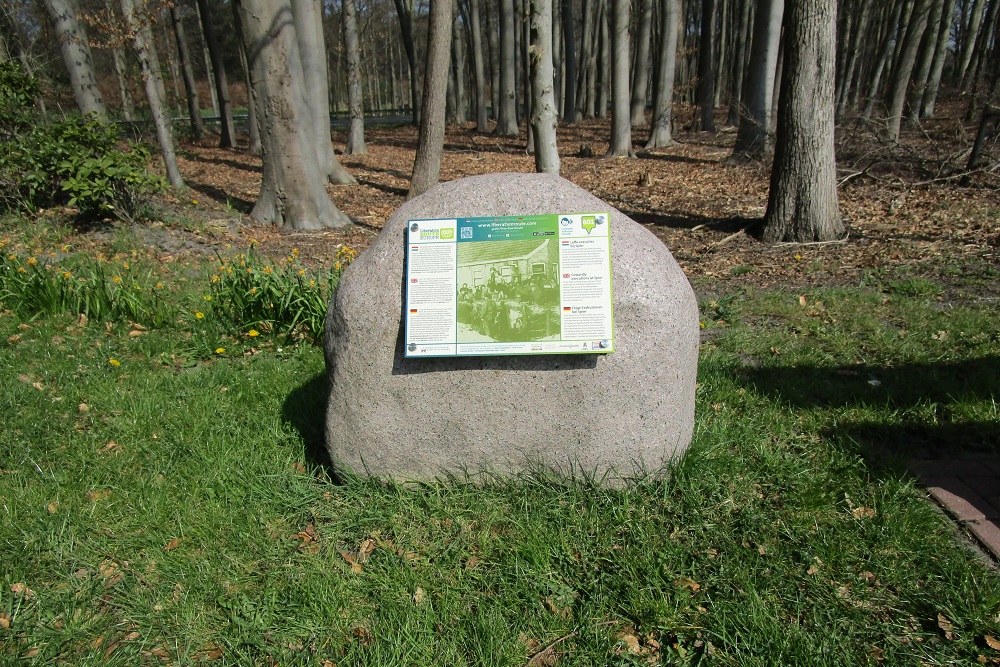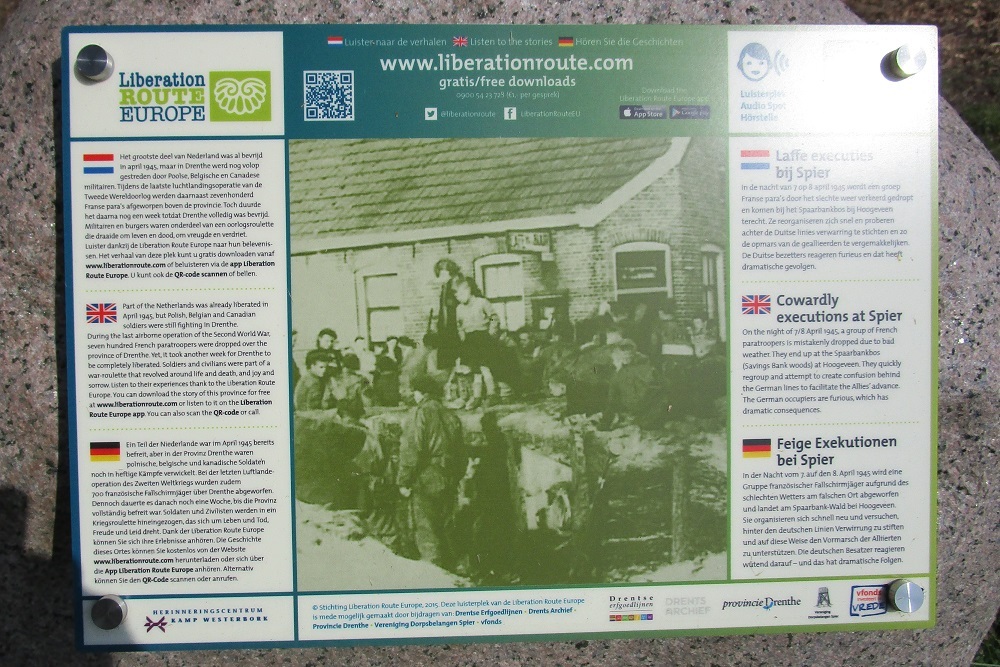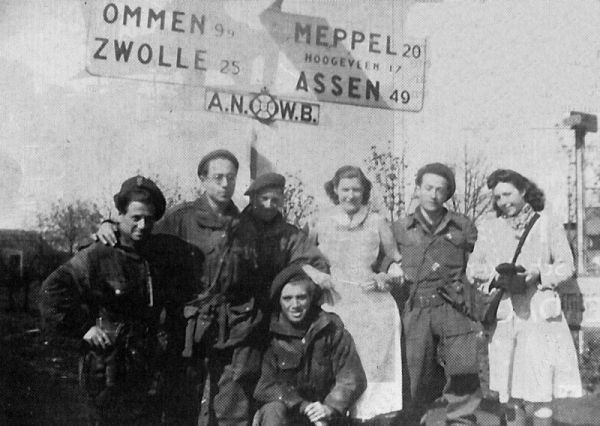Liberation Route Marker 601: Cowardly executions at Spier
Cowardly executions at Spier
Operation Amherst was the code name for the airborne landings of some 700 French paratroopers. They were part of the British SAS (Special Air Service). They were deployed to create confusion behind enemy lines. They also had to try and organise the local resistance and pass on as much information as possible to the 2nd Canadian Army Corps, which was advancing north from Nijmegen and Arnhem.
The paratroopers were divided into 47 sticks, dropped near Meppel, Beilen, Westerbork, Gieten-Borger, Appelscha and Assen. In the night of 7/8 April 1945, the French were dropped above Drenthe.
The bad weather on the night in question was one of the reasons that the airborne drop of more than 700 French paratroopers was not entirely successful during operation Amherst. One group landed in the Spaarbank woods near Hoogeveen. They gathered at Jan Vos’ farm on the Wijsterseweg. The Germans found out not long after and launched an attack on the farm. Heavy machine-gun fire caused the farm to go up in flames and the French withdrew to Coevorden with several prisoners of war.
The German occupying forces responded immediately with raids. Houses were searched and everyone who might have had anything to do with the French was taken prisoner. Arend Jan Scholing’s family was immediately executed in their own bedroom. Commander Jung of the Order Police (the Orpo) gave the order to execute another 15 civilians. These events took place in Spier while the allied troops could be heard approaching in the distance.
Operation Amherst was the last major air landing of the Second World War and heralded the liberation of the province of Drenthe.
Audiospot - Cowardly executions at Spier
Liberation Route Europe is a certified Cultural Route of the Council of Europe. With hundreds of sites and stories in nine European countries, the route links the main regions along the advance of the Allied Forces in 1943-1945.
The entire route consists of themed routes that can be travelled by by hiking, walking, cycling and car. These routes pass numerous historical and interesting sites and tell stories from a multitude of perspectives that were important in the final phase of World War II.
Many routes feature listening spots, offering the opportunity to listen to a historical story at a location. In addition, many ‘Vectors of Memory’ have been placed, indicating that the passer-by is on one of the Liberation Routes.
The routes can be found on the Liberation Route Europe website or in the app through which many stories can also be listened to.
Do you have more information about this location? Inform us!
Source
- Text: TracesOfWar & Liberation Route Europe
- Photos: Dick de Bruijne
Nearby
Museum
Point of interest
- Remains German Shooting Range Beilen - Beilen
- Bomb Craters Zuid Hijkerzand - Hijken
- Air Observation Tower 7X3 - Echten - Echten
Monument
- Monument Execution 10 April 1945 Spier - Spier
- Memorial French Paratrooper - Spier
- Monument Christiaan Kuiper - Dwingelo
Cemetery
- Dutch war victims Beilen Cemetery - Beilen
- French War Grave General Cemetery Beilen - Beilen
- Commonwealth War Graves General Cemetery Beilen - Beilen
Remembrance Stone
- Stumbling Stone Looveen 16 - Beilen
- Stumbling Stone Linthorst Homanweg 7 - Beilen
- Stumbling Stones Stationslaan 24 - Beilen
Fortification
- German Anti-tank Ditch Zuid Hijkingerzand - Hijken
- Remains German Anti-tank Ditch Hoogersmilde - Hoogersmilde







